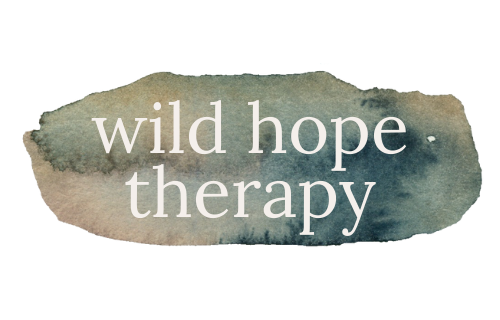Understanding Seasonal Affective Disorder: Coping through the winter months
You might have been noticing some subtle changes in their mood as winter drag on. For some, these shifts are more pronounced and impactful, signaling the onset of seasonal affective disorder (SAD). SAD is different from general depression, has unique effects on women, and currently, may be occurring at an intersection with broader political and cultural stressors. Coping strategies and therapy can play a crucial role in fostering resilience and healing.
What is Seasonal Affective Disorder?
Seasonal affective disorder, often abbreviated as SAD, is a type of depression that follows a seasonal pattern. Most commonly, symptoms emerge in late fall or early winter and subside during the sunnier spring and summer months. While less common, some people experience a reverse pattern, with symptoms appearing in the summer.
Key Symptoms of SAD:
Persistent low mood or feelings of sadness
Loss of interest in activities once enjoyed
Fatigue or lack of energy
Changes in sleep patterns (often oversleeping)
Changes in appetite (frequently cravings for carbohydrates)
Difficulty concentrating
Feelings of hopelessness or worthlessness
It’s important to recognize that SAD is more than just “winter blues” or a passing mood. For those affected, it can disrupt daily life and significantly impact mental health.
How SAD Differs from Depression
While SAD is considered a subtype of depression, there are distinct differences:
Seasonal Pattern: Unlike major depressive disorder (MDD), SAD’s symptoms are tied to specific seasons, with predictable onset and remission.
Underlying Causes: SAD is often linked to reduced exposure to sunlight, leading to disruptions in circadian rhythms and serotonin production. MDD, on the other hand, can result from a variety of factors, including genetics, trauma, or chronic stress.
Treatment Approach: While both conditions may benefit from similar interventions, such as therapy and medication, SAD-specific treatments often include light therapy.
Understanding these distinctions is crucial in ensuring proper diagnosis and treatment.
SAD and Its Impact on Women
SAD disproportionately affects women, with research suggesting that they are four times more likely than men to be diagnosed. Several factors may contribute to this disparity:
Hormonal Influences: Hormonal changes, such as those associated with menstrual cycles, pregnancy, or menopause, can amplify mood-related symptoms.
Cultural Expectations: Women often shoulder disproportionate caregiving responsibilities, making it harder to prioritize their own mental health during challenging seasons.
Social Pressures: Unrealistic societal standards about productivity, appearance, and emotional labor can exacerbate feelings of inadequacy during times of low energy and motivation.
Recognizing these dynamics can help women and their support systems better address the unique challenges posed by SAD.
The Intersection of SAD and Broader Stressors
Experiencing SAD during periods of heightened political or cultural tension can add layers of complexity to an already challenging condition. For example:
Overwhelming Media Consumption: Constant exposure to distressing news can intensify feelings of hopelessness or anxiety.
Economic Pressures: Financial instability, especially during holidays, can heighten stress for those already struggling with SAD.
Marginalization and Inequality: Women—particularly women of color, LGBTQ+ individuals, and other marginalized groups—may face systemic stressors that compound the emotional burden of SAD.
These overlapping factors highlight the importance of addressing SAD through a lens that considers the broader social and cultural context.
Coping Strategies for Managing SAD
While seasonal affective disorder can feel overwhelming, there are practical steps you can take to ease symptoms and reclaim a sense of well-being:
1. Prioritize Light Exposure
Maximize your exposure to natural light by spending time outdoors during daylight hours. Consider using a light therapy box, which mimics natural sunlight and can help regulate your body’s internal clock.
2. Maintain a Consistent Routine
Structure your day to include regular wake-up and sleep times, balanced meals, and physical activity. A predictable routine can help stabilize your mood and energy levels.
3. Engage in Joyful Movement
Physical activity, such as yoga, dancing, or brisk walks, can boost endorphins and improve mood. Choose activities that feel accessible and enjoyable rather than forcing yourself into rigid workout regimens.
4. Nourish Your Body
Focus on nutrient-rich foods that support brain health, such as omega-3 fatty acids, lean proteins, and plenty of fruits and vegetables. While it’s natural to crave comfort foods, balance is key.
5. Build a Support System
Connect with loved ones who can offer empathy and understanding. Whether it’s a friend, family member, or support group, having people who “get it” can make a world of difference.
The Role of Therapy in Treating SAD
Navigating SAD can be daunting, but therapy offers a space to explore your feelings, identify patterns, and build resilience. A strengths-based, trauma-informed care tailored to your unique needs can feel supportive during the winter months. Here’s how therapy can help:
1. Strengths-Based Perspective
Rather than focusing solely on deficits or challenges, a strengths-based approach highlights your resilience, capabilities, and resources. Together, you and your therapist will uncover what has helped you persevere in the past and build on those strengths.
2. Trauma-Informed Care
For many, SAD symptoms may be linked to or exacerbated by past trauma. Trauma-informed therapy ensures that your experiences are honored and that interventions prioritize safety, trust, and empowerment.
3. Tailored Interventions
A therapist can collaborate with you to develop personalized strategies, which may include cognitive-behavioral techniques, mindfulness practices, or exploration of underlying emotional triggers.
4. Addressing Broader Contexts
Mental health doesn’t exist in a vacuum. Therapy can help you process the impact of systemic stressors and identify actionable steps to navigate these challenges.
Your connection to the natural rhythms of nature
Seasonal affective disorder is a profound reminder of how deeply connected we are to the rhythms of the natural world. While it’s normal to feel out of sync during certain times of the year, you don’t have to navigate these challenges alone. With the right support, tools, and compassion, it’s possible to move through the darkness and toward a brighter, more balanced season of life.

